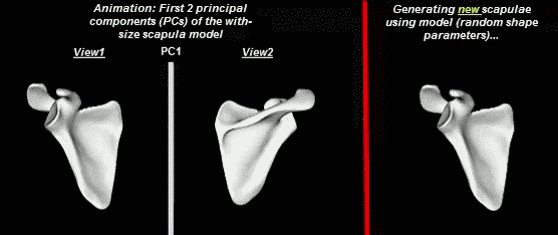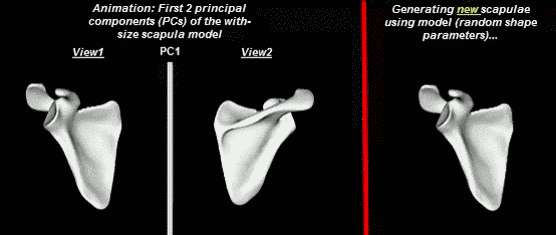Tinashe Mutsvangwa, Valérie Burdin, Cédric Schwartz, and Christian Roux,
University of Cape Town, Télécom Bretagne, University of Liège and Ecole des mines de Saint-Etienne, France, Volume 62, Issue 4, Page: 1098-1107

Statistical shape models (SSMs) have become an indispensable tool for medical image analysis with use ranging from surgical planning, morphometric analysis to image segmentation. The development of shape models particularly in 3D often involves capturing the variation in instances of the object of interest. In order to do this a correspondence of landmarks, features, (vertices, for 3D surfaces) needs to be established across the sample of objects. Automating this process however, can be challenging especially in 3D and in particular for certain structures that exhibit a large amount of variation across the sample and are also complex in terms of anatomical shape. The common approach is to perform an elastic registration from a reference instance to each of the instances in the sample. Landmarks, features, vertices which are closest between surfaces after this process are then identified as corresponding. A mathematical description encapsulating the variation can thus be formulated through principal component analysis (PCA). This approach however introduces a bias dependent on the selection of the reference. An additional shortcoming is that often some manual landmarking is used to initialise the registration resulting in errors associated with user-operated selection of landmarks.
The approach we report in this paper overcomes the shortcomings evident in most statistical shape model development. We present an automated pipeline for SSM development that does not rely on manual landmarks or a regionalization of the structure and also does not suffer from the bias associated with selection of a reference object from the sample. Additionally it can handle a complex shape such as the human scapula which has large variability and a very thin medial surface. Finally it uses the probabilistic principal component analysis framework that increases the domain of the shape variability.
Key words: Statistical shape model, Automated pipeline, Scapula, Humerus, Bone 3D modelling

